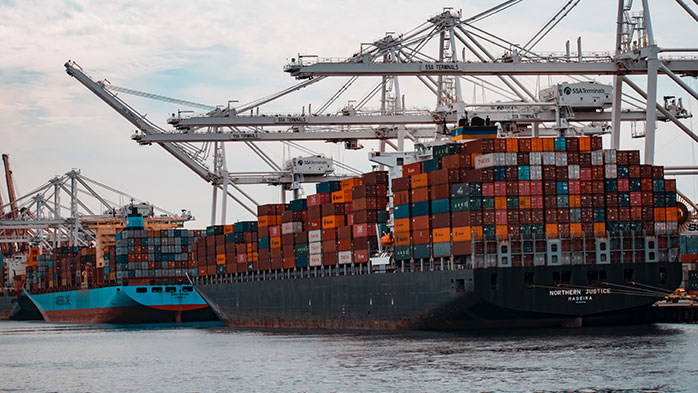Freight rates forecast to rise 10-20%
IMO 2020 regulations to lower sulphur in ship fuel are expected to push up rates this year

Research suggests that the new IMO 2020 MARPOL Annex VI policy, which looks to tackle ship emissions through reducing their sulphur content, will raise freight rates by around 10-20%. The forecast from business intelligence provider CRU notes that costs are associated with the new fuel blends and fitting scrubbers to ships’ exhausts. Currently most ship owners are choosing to go with different fuel blends, with only 5% of Panamax vessels expected to have scrubbers by the end of 2020.
Fuel blending expected to allow compliance
Historically, bunker fuel has been the mainstay of shipping engines. It is a residual fuel of the oil refining process and is cheap, with a high sulphur.
The most common types of bunker fuels are IFO 380 and IFO 180.
The IMO regulation will limit sulphur emissions and therefore requires shipowners to consider the options available to comply. Fuel blending will be key to achieving compliance.
The extent to which fuel type needs to be changed depends on the extent to which emissions need to be cut. Prior to the implementation of IMO 2020, the sulphur emission limit outside the emission control areas (ECAs) was 3.5% m/m but CRU expects that 2.5% m/m is a more accurate figure for actual emissions.
The impact of coronavirus
With the coronavirus causing havoc across supply chains, particularly for those that have been heavily relant on Chinese manufacturing bases, freight rates over the initial course of 2020 will be extremely hard to predict. Already container shippers are dong blank sailings and bulk shipping rates hit an all-time low, although some of these may be linked to wider trends than coronavirus and are now coming off a floor. Disruptions to shipping patterns have also meant that normal movements have been heavily disrupted, with a record high of containers waiting to be offloaded in Chinese ports. There is therefore a mixed pattern of subdued demand but also the potential for higher rates for backhaul sailings and to avoid congested ports.
Scrubber uptake has been more prevalent than anticipated
In order to avoid using this more expensive fuel and also to keep current fleets in service with minimal modifications, scrubbers are expected to climb in usage.
Scrubbers allow ships to continue to use very high sulphur fuel oil by washing exhaust emissions with seawater or alkaline mixtures. On current projections of freight rates CRU believes that the pay-off period for installing a scrubber is now expected to be 12-18 months, on average.
CRU estimates that 20-25% of the larger Capesize vessels will have scrubbers fitted by end 2020. For the mid-size Panamax vessels, the uptake is lower at 5%. The smaller Handymax vessels are unlikely to install scrubbers at all.
This means that 10%-15% of total ocean-going freight capacity will employ scrubbers, rising to approximately 20% by 2025. More Capesize capacity will be fitted with scrubbers because the vessel size and the typical length of voyage mean a larger volume of fuel is burned making the capital investment and the pay-off period much more attractive. In addition, Capesize vessels generally travel on fixed routes between very large ports (e.g. Brazil or Australia to China), where the likelihood of the high sulphur fuel oil (IFO180) being available is greater than that of a small port.
Of the vessels fitted and due to be fitted with scrubbers, most have opted for the open loop option (where the exhaust gases are washed with sea water and discharged into the sea). This comes as a surprise as closed-loop scrubbers initially were considered to be more environmentally friendly as the 'waste' was instead disposed of after treatment at ports. However, since some studies have concluded that there is no notable negative environmental impact to using open loop vessels, many companies fitting scrubbers are willing to take the risk; they are assuming that there will not be a subsequent policy to remove open-loop scrubbers from operations any time soon. Open loop scrubbers cut down on installation and running costs, along with the logistics of carrying and disposing of the waste. There are some regions (Singapore and Fujairah) where an open loop scrubber is not allowed to operate, but until controls are seen at other major ports, such as Rotterdam, Qingdao and Newcastle, the movement of bulk vessels will be largely unaffected.
